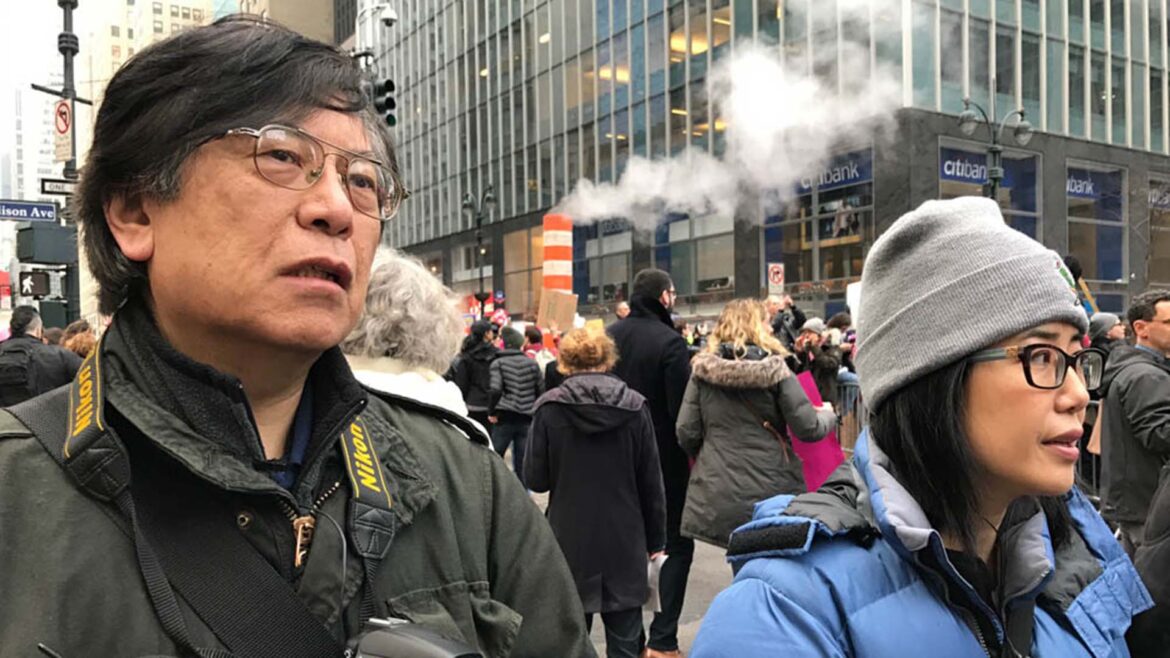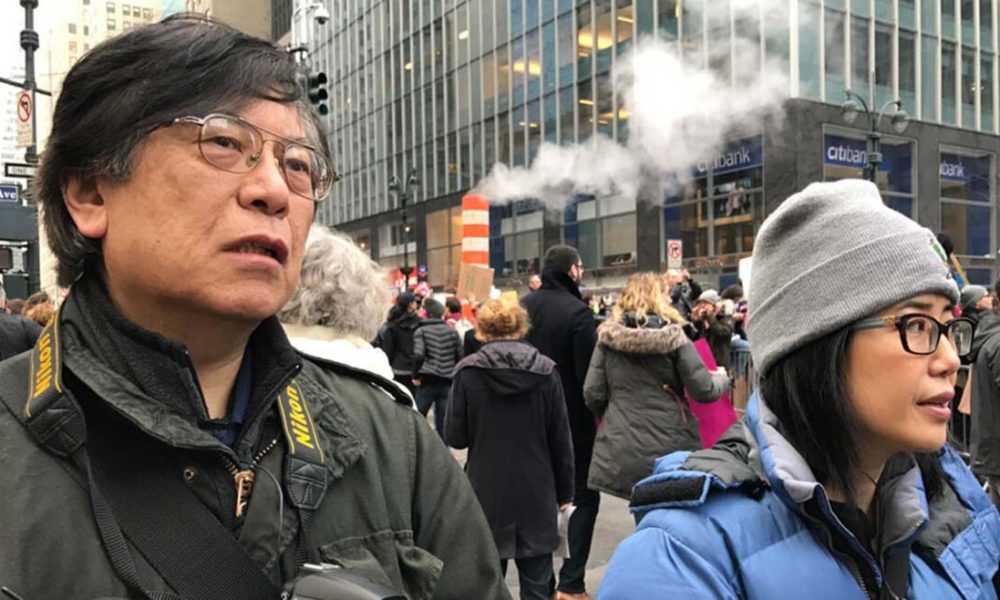Celebrity
Who Is Corky Lee? Complete Guide
Published
7 months agoon
By
admin
Introducing the unsung hero behind the lens, the visionary who captured Asian America’s struggles and triumphs like no other – Corky Lee! If you haven’t heard of him before, prepare to be enlightened.
From his humble beginnings to becoming an iconic figure in photography, Corky Lee has left an indelible mark on our society. In this complete guide, we’ll delve into his early life, explore his remarkable contributions to Asian American representation.
Take a look at some of his most famous photographs, examine controversies surrounding his work and legacy, and finally recognize the lasting impact he has made. So grab your camera strap and join us as we uncover the incredible story of Corky Lee!
Corky Lee Early Life and Career
Corky Lee, born as Young Kwok Lee in 1948, was raised in Queens, New York. Growing up, he faced the challenges of being an Asian American in a predominantly white neighborhood. These early experiences would later fuel his passion for capturing the struggles and triumphs of his community through photography.
Lee’s interest in photography developed during high school when he received his first camera as a gift from his father. This ignited a creative spark within him and set him on a path to becoming one of the most influential photographers documenting Asian American history.
In college, Lee studied political science but continued to pursue photography as a side passion. It wasn’t until he attended an exhibit featuring photos by Dorothea Lange that he realized the power of visual storytelling and its ability to shed light on societal issues.
Throughout his career, Corky Lee focused on giving voice to those whose stories often went untold – Asian Americans. He captured poignant moments at protests, community events, and everyday life scenarios that showcased both the struggles and resilience of this diverse group.
Impact and Contributions to Asian American Representation
Corky Lee’s impact on Asian American representation is immeasurable. Through his photography, he has captured the struggles, triumphs, and everyday lives of Asian Americans in a way that resonates with people from all walks of life.
By shedding light on their experiences and highlighting their stories, Corky Lee has given a voice to a community often overlooked or misrepresented.
His photographs have been featured in countless publications, exhibitions, and museums around the world. They serve as powerful visual narratives that challenge stereotypes and break down barriers.
From documenting protests against racial discrimination to capturing intimate moments within immigrant communities, Corky Lee’s work humanizes the Asian American experience.
One of his most iconic photographs is “The Chinese Railroad Workers,” which depicts descendants of Chinese railroad workers holding a photo of their ancestors who built the Transcontinental Railroad but were excluded from historical records. This image symbolizes the resilience and contribution of Asian Americans throughout history.
Another significant contribution by Corky Lee is his documentation of anti-Asian hate crimes and acts of racism. His photos bring attention to these injustices while also giving a platform for victims’ voices to be heard. In doing so, he raises awareness about these issues and advocates for change.
Corky Lee’s impact on Asian American representation cannot be overstated. His photographs have sparked conversations about identity, culture, activism, and equality across generations. Through his lens, he has opened doors for dialogue while leaving an indelible mark on both artistry and advocacy.
Famous Photographs by Corky Lee
Corky Lee’s camera lens captured moments that spoke volumes about the Asian American experience. Through his photographs, he sought to shed light on the often overlooked narratives and struggles of this community. Here are some of his most iconic and influential works.
In “The Last Gathering of OCA” (1974), Corky Lee documented a pivotal moment in history when Chinese Americans gathered for what would be their last event as the Organization of Chinese Americans before becoming part of a larger Asian American movement.
Another notable photograph is “Vietnam War Protest” (1975), which captures the energy and passion of Asian activists protesting against America’s involvement in Vietnam. This image encapsulates the intersectionality between different communities coming together for a common cause.
One particularly powerful photograph is “Chinatown Garment Workers Strike” (1982). In this image, Corky Lee immortalized the determination and resilience of immigrant workers fighting for fair wages and better working conditions within New York City’s Chinatown.
Corky Lee also delved into documenting everyday life within Asian American communities. His photograph titled “Halloween Parade – Little Tokyo, Los Angeles” (2001) showcases children proudly displaying their cultural heritage through elaborate costumes during a festive celebration.
One cannot overlook “Vincent Chin Funeral” (1982), an emotionally charged photo capturing the grief-stricken faces mourning the loss of Vincent Chin – a young Chinese American who was brutally murdered in a racially motivated hate crime.
Through these famous photographs, Corky Lee challenged stereotypes, amplified voices that had long been silenced, and brought important conversations to light with his artistry behind the lens.
Controversies and Criticisms
Throughout his career, Corky Lee faced some controversies and criticisms that tested his commitment to Asian American representation. One of the main criticisms directed towards Lee was his approach to capturing Asian American experiences.
Some argued that he focused too much on stereotypical images or sensationalized narratives, perpetuating certain stereotypes rather than challenging them.
Additionally, there were individuals who disagreed with Lee’s decision to use photography as a means of activism. Critics claimed that he should have pursued more traditional forms of advocacy or utilized other mediums to bring about change for the Asian American community. These differing opinions sparked debates within both the art world and the Asian American community itself.
Despite these controversies and criticisms, it is important to recognize that Corky Lee played a significant role in raising awareness about issues affecting Asians in America.
He pushed boundaries with his work, forcing conversations around identity, representation, and social justice. In doing so, he paved the way for future artists and activists who continue to challenge stereotypes and fight for equal recognition.
As we reflect on Corky Lee’s legacy, it is essential not only to celebrate his achievements but also engage in critical dialogue regarding areas where improvement can be made in representing diverse communities authentically without reinforcing harmful tropes or limiting their experiences within narrow confines.
Corky Lee Legacy and Recognition
Corky Lee’s legacy in the world of photography and Asian American representation is undeniable. Throughout his career, he dedicated himself to capturing the stories and experiences of Asian Americans, ensuring their voices were heard and their visibility increased.
His photographs have become iconic representations of the struggles, triumphs, and everyday lives of Asian Americans. From documenting historical events like the protests against Vincent Chin’s murder to capturing intimate moments within communities, Corky Lee’s lens has shaped our understanding of what it means to be Asian American.
Lee’s work has been featured in numerous exhibitions across the United States and internationally. His photographs have graced the walls of prestigious institutions such as the Smithsonian National Museum of American History, where they continue to educate future generations about Asian American history.
In recognition of his contributions, Corky Lee received several accolades throughout his career. In 2002, he was honored with an Award for Excellence in Documentary Photography by The New York Association for New Americans. He was also awarded a Pioneer Award from The Organization Of Chinese Americans in 2013.
Beyond awards and recognition, Corky Lee leaves behind a lasting impact on those who knew him personally or through his work. He inspired countless aspiring photographers to use their craft as a tool for social change and advocacy.
While we mourn the loss of this influential artist and advocate for justice, it is important that we carry forward his legacy by continuing to amplify marginalized voices through artistry and storytelling. Corky Lee showed us that photographs can be powerful catalysts for change – tools that challenge stereotypes while celebrating diversity.
Read more:How to Use Enjoy4Fun? Complete Guide

You may like

In the Spotlight: Sabu Howard’s Biography, and Net Worth

The Rise of Uber Trujillo: Griselda Blanco’s Legacy Lives On

Yasin Cengiz: Choreographing Stardom in the TikTok Spotlight

The Secrets of Dallas Yocum Unveiled

The Journey of Liam Costner: A Rising Star

Albert Ezerzer: What Really Happened Behind the Scenes?

Snake Oil Provisions | Remedy for the Mundane

Vintage Americana : RRL Jackets, Shirts, Clothing & Accessories

Intricate Links Unraveling NYT Connections Puzzle

Imgsed Imginn : Browse Instagram Incognito – The New Era of Social Media Privacy

How to Style Different Types of Shoes for Every Occasion

Personalized Concierge Medical Care in Santa Rosa

Difference Between Server vs. Cloud: Pick the Right Solution

VAIDYAGRAMA WELLNESS HOSPITAL

AUTO BODY REPAIR

Crafting Memories in Wood: The Timeless Allure of Wooden Caskets

7 Must-Know Insights on Quince Clothing for Your Special Day

Exploring the Craftsmanship of Treehouse Brewery A Haven for Beer Enthusiasts

The Ultimate Guide to Guns International

7 Must-Know Tips for Mastering Craigslist Palm Springs

In the Spotlight: Sabu Howard’s Biography, and Net Worth

The Rise of Uber Trujillo: Griselda Blanco’s Legacy Lives On

Yasin Cengiz: Choreographing Stardom in the TikTok Spotlight

The Secrets of Dallas Yocum Unveiled

The Journey of Liam Costner: A Rising Star

Albert Ezerzer: What Really Happened Behind the Scenes?

Snake Oil Provisions | Remedy for the Mundane

Vintage Americana : RRL Jackets, Shirts, Clothing & Accessories

Intricate Links Unraveling NYT Connections Puzzle





